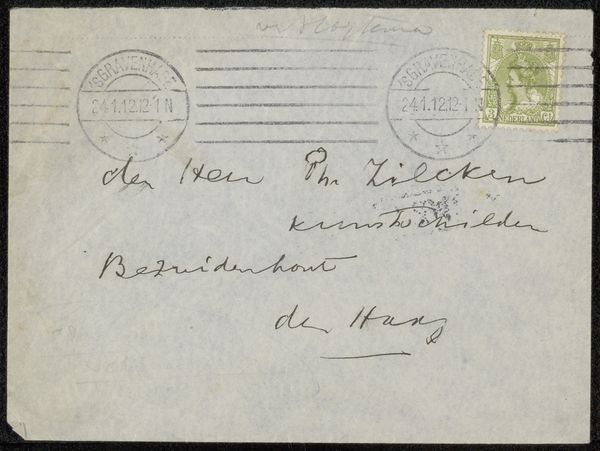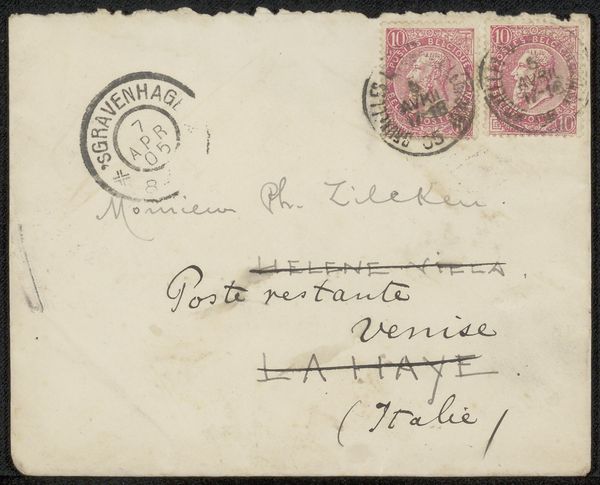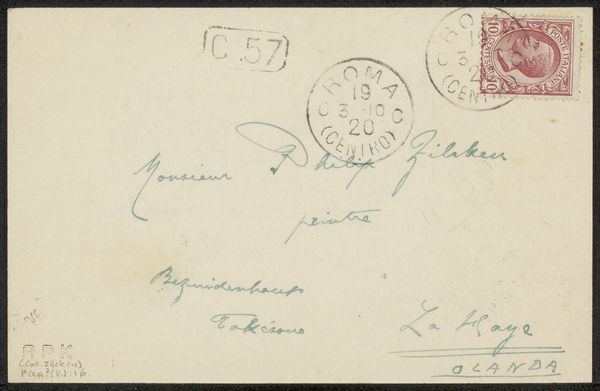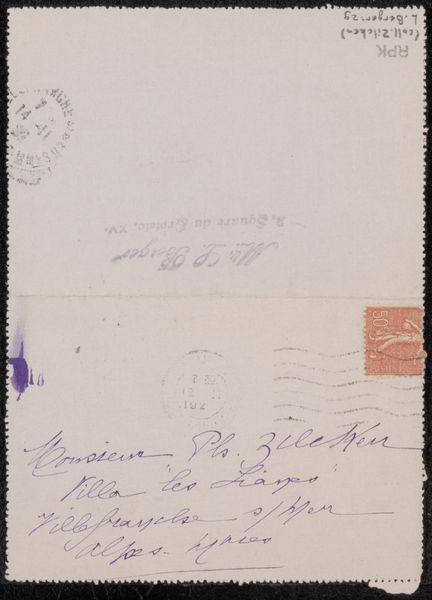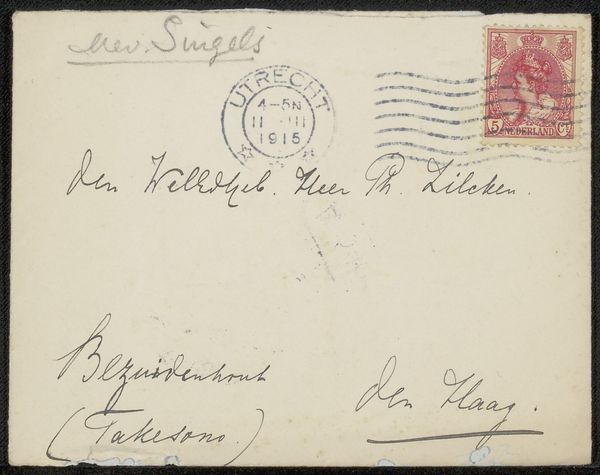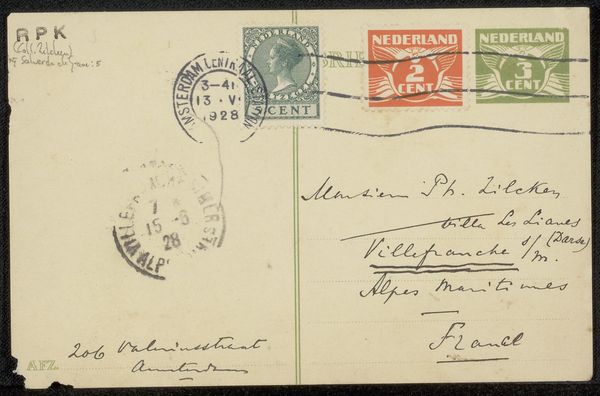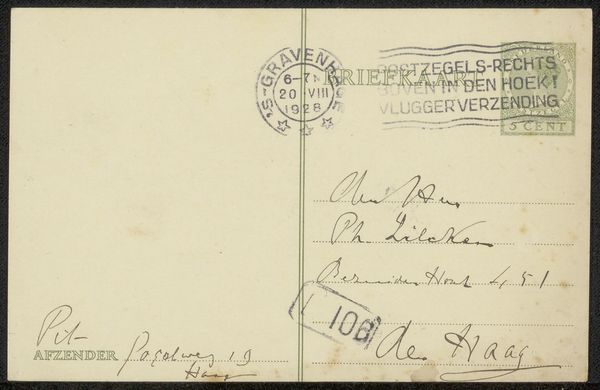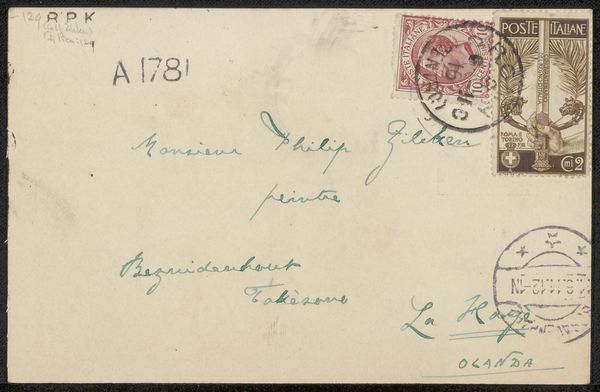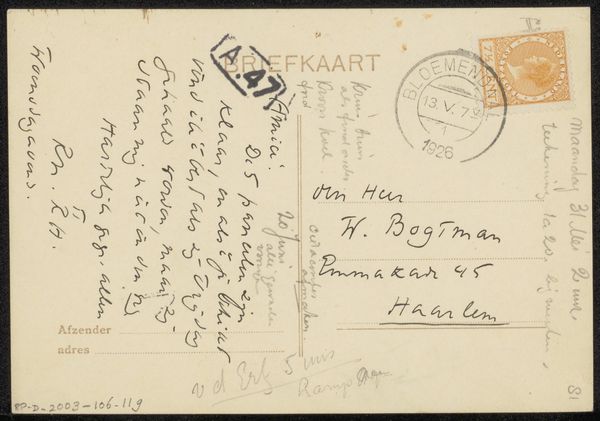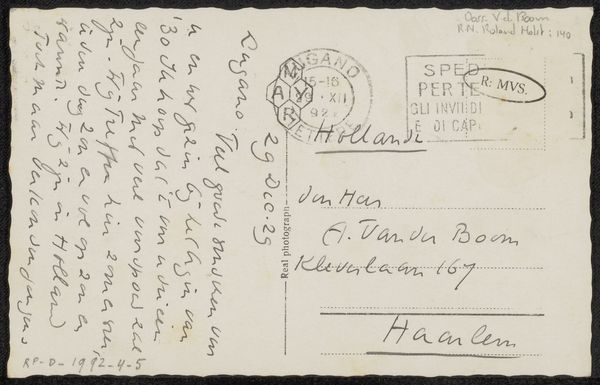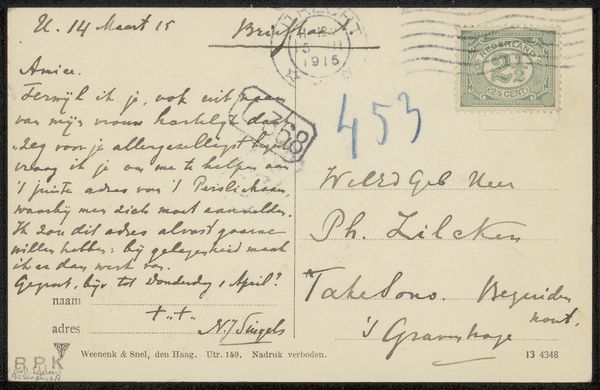
paper, ink
#
portrait
#
paper
#
ink
#
geometric
#
calligraphy
Copyright: Rijks Museum: Open Domain
Curator: This unassuming envelope holds a world of untold stories. This piece by Hendrikus Hubertus van Kol, dating between 1862 and 1925, presents more than just a means of postal communication; it's a portrait of an era rendered in ink on paper. It is titled “Envelop aan Philip Zilcken” which is Dutch for “Envelope to Philip Zilcken”. Editor: The first thing that strikes me is the delicate script – a fading, looping dance across the paper. It evokes such a sense of intimate, almost forgotten correspondence. And that small, worn stamp! It is charmingly austere and geometrical. Curator: Exactly! The very act of handwriting connects the sender and recipient in a profoundly human way, distinct from the typed emails of today. It makes me consider how something so mundane, like an addressed envelope, contains immense societal significance, carrying cultural and class information of the period in which it was created. Editor: Agreed. Even the geometric pattern visible in the paper itself – see the micro-grid effect? – speaks to an attempt to make a utilitarian object aesthetically pleasing, and how important communicating via post was during those years. It reminds us that every form, even the most functional, carries symbolic weight. Is that the sender's name and town in the lower-left corner, almost as if taking credit? Curator: Indeed. It says "H. H. VAN KOL. VOORSCHOTEN.” This envelope provides insight into not only its time, but potentially also illuminates something regarding issues around communication access and equity between different communities, during its creation and lifespan. What narratives do such objects tell us regarding contemporary concerns over communication and community cohesion? Editor: Looking closer, you realize each flourish, each cancelled stamp is an act of memory, each address is almost talismanic. A lost relic now made immortal within an art display. It gives pause to our fleeting, mostly digital correspondence from our era. Curator: Thinking of it as a found object—rescued from obscurity, enshrined in an art gallery—opens exciting opportunities. It urges us to consider more expansive readings that connect art, life, and the archives of everyday exchange. Editor: I’ll never look at my own mail the same way again. Curator: Precisely; art makes us question the familiar.
Comments
No comments
Be the first to comment and join the conversation on the ultimate creative platform.

